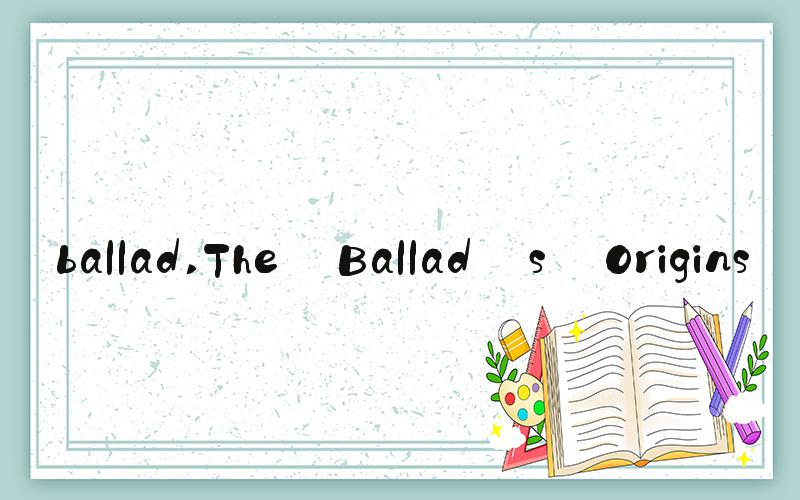
 Ballad: A Poetic Form that Transcends Time and Borders
Ballad: A Poetic Form that Transcends Time and BordersBallad is a form of poetry that has been around for centuries. It originated in Europe in the Middle Ages, but its influence has reached far beyond its historical roots, transcending time and borders to become a beloved poetic form in cultures around the world. This article explores the rich history and cultural significance of the ballad, examining its characteristics and evolution over time.
The Ballad's OriginsThe ballad began as a form of folk poetry in medieval France and England, where it was used to recount tales of heroic deeds, tragic love stories, and supernatural encounters. Typically, ballads were sung or recited by traveling minstrels or storytellers, who would pass them on to their audiences. Over time, these verses evolved and adapted to different cultures, taking on new themes and styles.
The Characteristics of a BalladOne of the defining characteristics of a ballad is its structure. Ballads are typically written in quatrains, which consist of four lines of alternating rhyme. The first and third lines of each quatrain are typically written in iambic tetrameter, a rhythm consisting of four stressed and four unstressed syllables. The second and fourth lines are written in iambic trimeter, a rhythm consisting of three stressed and three unstressed syllables. This simple and repetitive structure gives the ballad a musical quality, making it easy to remember and recite.
The Evolution of the BalladOver time, the ballad evolved and adapted to different cultures and themes. In Scotland and Ireland, ballads were used to tell stories of rebellion and political upheaval, while in the United States, ballads were often used to recount the experiences of pioneers and settlers. In the African American community, ballads were used to express the struggles and experiences of slavery and oppression.
The Popularity of the BalladDespite its long history and evolving form, the ballad remains a popular form of poetry today. It has been adapted into songs, films, and other media, and continues to inspire new writers and storytellers. The ballad's simple and powerful structure and its ability to tell stories of love, loss, and adventure make it a timeless and enduring form of poetry.
The Cultural Significance of the BalladThe ballad holds a special place in the cultural heritage of many countries. In Scotland, for example, ballads often tell the stories of legendary figures like William Wallace and Robert the Bruce. In Ireland, ballads are used to commemorate historical events like the Easter Rising and the Troubles. In the United States, ballads like "Oh Susanna" and "Home on the Range" have become traditional songs that are taught in schools and passed down from generation to generation. The ballad's ability to capture the essence of a culture's history and values makes it a vital part of our shared cultural heritage.
The Future of the BalladAs we move into the future, the ballad will continue to evolve and adapt to new forms and themes. Its simple and powerful structure and its ability to tell timeless stories will continue to make it a beloved form of poetry, cherished by writers and audiences alike. So whether you're a poet, a musician, or just a lover of stories, take some time to explore the rich history and cultural significance of the ballad, and discover the magic of this timeless and enduring form of poetry.
